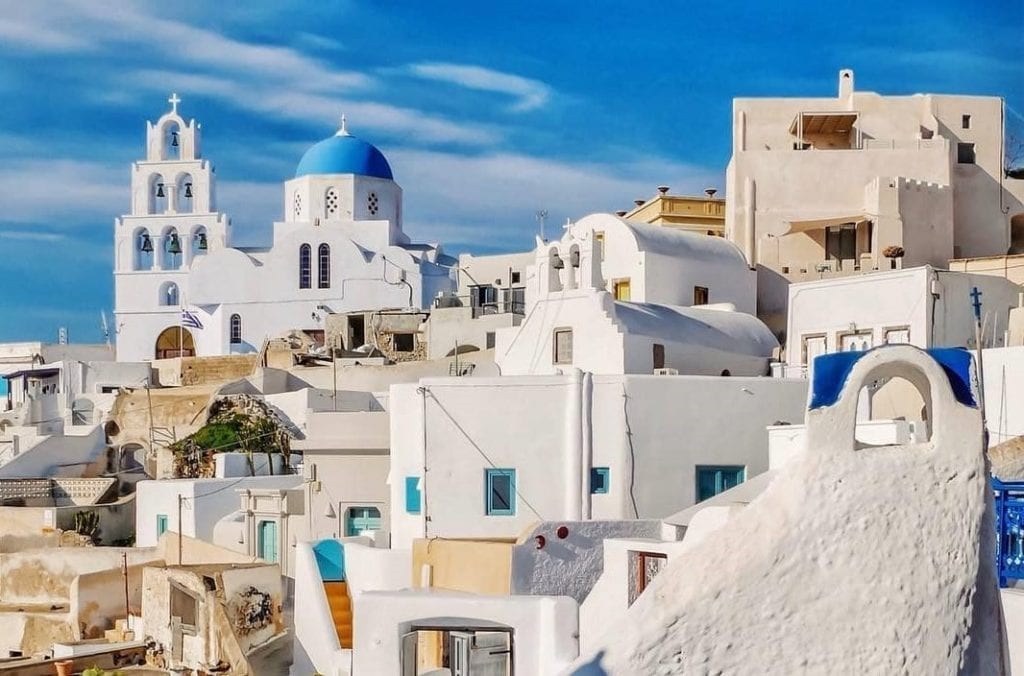Pyrgos, a traditional village in the heart of Santorini, is a hidden gem that combines the island’s charm, history, and culture in one serene location. Known for its whitewashed houses, winding alleys, and panoramic views of the Aegean Sea, Pyrgos is often called the “balcony of Santorini” because of its elevated position. While Oia and Fira attract large tourist crowds, Pyrgos offers an authentic, peaceful experience for travelers seeking to immerse themselves in the island’s heritage.
This article explores the fascinating history, cultural richness, must-see attractions, and lifestyle of Pyrgos while also providing travel tips, dining recommendations, and an insight into Greece’s thriving real estate market.
History of Pyrgos
Pyrgos is one of the oldest settlements in Santorini, with roots dating back to the medieval period. Built on a hilltop for strategic purposes, it served as a fortress village protecting residents from pirate invasions. The Venetian influence is evident in the architecture, narrow pathways, and the remains of its castle, Kasteli, which still stands proudly today.
In earlier centuries, Pyrgos was the administrative center of the island before the shift to Fira. Despite changes over time, the village has preserved its authentic Cycladic identity.
Geography and Layout
The village is strategically located about 7 km from Fira, making it easily accessible while maintaining a secluded charm. Its elevated position provides stunning 360-degree views of the island — from the volcanic caldera to the rolling vineyards and the deep blue sea. The traditional Cycladic architecture dominates the landscape: cube-shaped white houses, blue-domed churches, and stone-paved alleys winding upward toward the castle.
Culture and Traditions
Pyrgos is deeply rooted in Greek Orthodox traditions. Religious festivals such as Easter are celebrated with remarkable devotion. During Good Friday, the entire village glows with thousands of candles placed along rooftops and pathways — a magical spectacle that attracts both locals and visitors.
The artistic scene is also thriving, with small galleries, workshops, and exhibitions showcasing local craftsmanship, paintings, and pottery.
Top Attractions in Pyrgos
Kasteli Fortress
The heart of Pyrgos is the medieval Kasteli fortress. Built in the 13th century, it served as a refuge for locals against pirate attacks. Walking through its narrow alleys feels like stepping back in time.
Church of Theotokaki
One of the oldest churches in Santorini, dating back to the 10th century, Theotokaki boasts impressive frescoes and religious icons.
Art Galleries and Studios
Local artists display their work in boutique galleries, offering visitors the chance to purchase unique art pieces inspired by the island’s landscapes.
Wine Tasting at Santo Wines
Santorini is famous for its Assyrtiko wine, and the nearby Santo Wines winery offers tastings with breathtaking views of the caldera.
Gastronomy in Pyrgos
Pyrgos is a paradise for food lovers. Traditional tavernas serve dishes like fava me koukia (yellow split pea puree), tomatokeftedes (tomato fritters), fresh seafood, and lamb slow-cooked with herbs. Many restaurants offer rooftop dining with panoramic sunset views.
Accommodation in Pyrgos
From luxurious boutique hotels to cozy guesthouses, Pyrgos caters to a range of budgets. Many accommodations are housed in restored traditional homes, blending modern comfort with historic charm.
Greece Real Estate: Investing in Pyrgos and Beyond
Greece’s real estate market has seen significant growth in recent years, with Santorini being one of the top investment hotspots. Pyrgos, in particular, is attracting buyers who seek quieter surroundings compared to the busy tourist hubs. Properties here range from restored stone houses and modern villas to traditional Cycladic homes. Foreign investors are drawn by Greece’s Golden Visa program, offering residency for property purchases over a certain threshold. Investing in Pyrgos real estate not only offers strong rental potential due to tourism but also promises long-term value appreciation thanks to the island’s enduring global appeal.
Events and Festivals
Aside from Easter celebrations, Pyrgos hosts various cultural events, including art exhibitions, wine festivals, and music performances, giving visitors a deeper connection to local life.
Best Time to Visit
Spring (April–June) and autumn (September–October) are ideal, with pleasant weather and fewer crowds. Summer offers vibrant energy but can be more crowded.
Practical Travel Tips
- Transportation: Renting a car or ATV is the best way to explore Santorini’s villages.
- Currency: Euro (€)
- Language: Greek is official, but English is widely spoken.
- Dress Code: Respectful attire is recommended when visiting churches.
Conclusion
Pyrgos stands as a perfect blend of tradition, beauty, and tranquility. Its rich history, cultural depth, and breathtaking views make it one of Santorini’s most rewarding destinations. Whether you’re wandering through medieval alleys, tasting world-class wines, or considering investing in Greece’s booming property market, Pyrgos promises an unforgettable experience.



